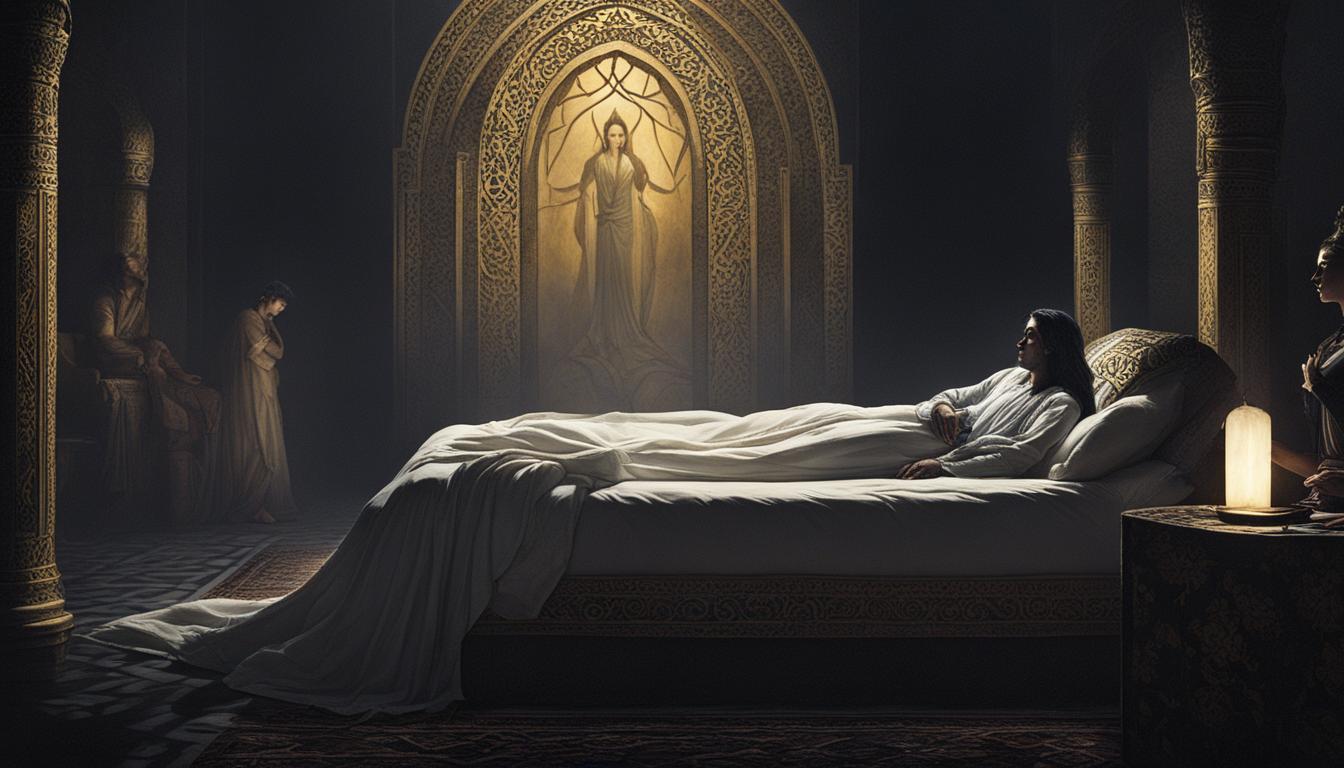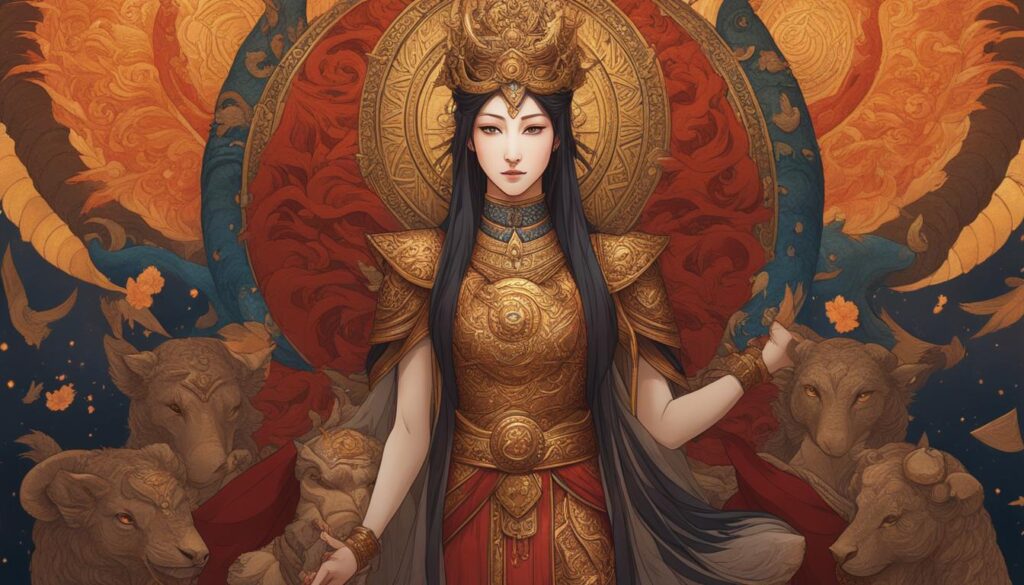There is no denying the beauty and allure of moonstone jewelry. Its ethereal and mesmerizing appearance has made it a popular choice for many individuals. However, despite its widespread appeal, moonstone may not be suitable for everyone. In fact, there are certain individuals who may need to exercise caution when it comes to wearing moonstone. In this article, we will discuss the do’s and don’ts of wearing moonstone, and who should avoid wearing this mystical gemstone.
Understanding Moonstone
Before we delve into who should avoid wearing moonstone, let’s take a moment to understand what moonstone is. Moonstone is a type of feldspar mineral that exhibits adularescence, which is a phenomenon where light scatters through the structure of the stone, producing a glowing effect. This gives moonstone its characteristic shimmer and iridescence. Moonstone is often associated with femininity, intuition, and emotional balance, and is considered to be a stone of protection and healing.
The Do’s: Who Can Wear Moonstone
Now that we know a bit more about moonstone, let’s discuss who can safely wear this beautiful gemstone. Moonstone is generally considered to be safe for most people to wear, and can be beneficial for those who are looking to enhance their emotional well-being, intuition, and spiritual growth. Here are some individuals who can safely wear moonstone:
– Those seeking emotional balance and calm: Moonstone is often associated with promoting emotional balance and harmony. If you are struggling with emotional turmoil or stress, wearing moonstone jewelry may help to bring a sense of calm and tranquility.
– Individuals looking to enhance their intuition: Moonstone is believed to enhance intuition and psychic abilities. If you are interested in deepening your connection to your intuition, wearing moonstone may help to amplify your natural intuitive abilities.
– Women seeking support during their menstrual cycle: Moonstone is often associated with the feminine energy and is believed to provide support during the menstrual cycle. Many women find that wearing moonstone during their period helps to ease symptoms such as cramps and mood swings.
– Those looking for protection: Moonstone is considered to be a stone of protection, especially for travelers and those embarking on new journeys. If you are looking for a protective talisman, wearing moonstone jewelry may provide a sense of security and comfort.
The Don’ts: Who Should Avoid Wearing Moonstone
While moonstone is generally safe for most individuals, there are certain groups of people who should exercise caution when it comes to wearing this gemstone. It is important to note that these recommendations are based on holistic and alternative healing practices, and may not be applicable to everyone. If you fall into any of the following categories, you may want to avoid wearing moonstone:
– Pregnant women: In some cultures, moonstone is believed to be associated with fertility and childbirth. However, there are also beliefs that wearing moonstone during pregnancy can have negative effects on the developing fetus. It is recommended for pregnant women to err on the side of caution and avoid wearing moonstone.
– Those with sensitive energy: Some individuals may be highly sensitive to the energy of certain gemstones, including moonstone. If you find that wearing moonstone results in feelings of discomfort, unease, or imbalance, you may want to avoid wearing moonstone altogether.
– People with specific medical conditions: Those with certain medical conditions, especially those that affect the nervous system or mental health, may want to avoid wearing moonstone. This is because moonstone is believed to have a strong impact on emotions and psychic energies, which may not be suitable for individuals with certain conditions.
– Individuals with allergies: Some people may be allergic to certain metals or materials commonly used in moonstone jewelry, such as nickel or copper. If you have known allergies to these materials, it may be best to avoid wearing moonstone jewelry to prevent any adverse reactions.
Conclusion
In conclusion, while moonstone is a beautiful and mystical gemstone that can offer numerous benefits, there are certain individuals who may need to exercise caution when it comes to wearing moonstone. By understanding the do’s and don’ts of wearing moonstone, individuals can make informed decisions about whether or not moonstone is the right gemstone for them. Whether you are drawn to the enchanting beauty of moonstone or are simply curious about its properties, it is important to consider your own unique circumstances before incorporating moonstone into your jewelry collection.
When to Avoid Wearing Moonstone
People who are prone to allergies should avoid wearing moonstone, as it may cause skin irritations or allergic reactions. Individuals with sensitive skin or a history of allergic reactions to other gemstones should exercise caution when wearing moonstone jewelry. Additionally, those with a known sensitivity to metals such as nickel or copper, which are commonly used in jewelry settings, should avoid wearing moonstone. It is important to pay attention to any signs of skin irritation or discomfort when wearing moonstone, and to seek the advice of a dermatologist if any concerns arise.
Cultural and Spiritual Considerations
In some cultures and spiritual beliefs, there are specific guidelines on who should avoid wearing certain gemstones, including moonstone. For example, in Indian astrology, it is believed that moonstone is not suitable for individuals born under certain zodiac signs. Some practitioners of crystal healing may also recommend against wearing moonstone for specific individuals based on their birth chart or energy balance. It is important to consider the cultural and spiritual connotations of moonstone before deciding to wear it, and to seek guidance from knowledgeable sources if necessary.
Physical and Emotional Sensitivity
Individuals who are highly sensitive to the energies and vibrations of gemstones may find that moonstone has an overwhelming effect on their emotions or physical well-being. Moonstone is often associated with enhancing intuition and emotional balance, but for some people, these properties may have an intensified or disruptive impact. Those who are particularly sensitive to subtle energies should approach wearing moonstone with caution, and may choose to limit their exposure to the stone or explore other grounding and protective practices to support their energetic boundaries.
Personal Preferences and Style
Ultimately, the decision to wear moonstone or any other gemstone is a personal one, based on individual preferences and style. While some people may find that moonstone resonates with them on a deep level and enhances their overall well-being, others may not feel drawn to the stone or may prefer the aesthetic of other gemstones. There are no strict rules about who should or should not wear moonstone, and each person’s relationship with gemstones is unique. It is important for individuals to trust their instincts and wear what feels right for them, regardless of any traditional or cultural guidelines.
Who Should Avoid Wearing Moonstone?
While moonstone is generally considered a safe and versatile gemstone to wear, there are certain individuals who may want to exercise caution when wearing it. People with a history of allergies or sensitive skin should be wary of wearing moonstone, as it can cause irritation or allergic reactions in some cases. Those who have experienced adverse skin reactions to other types of jewelry or gemstones should particularly avoid wearing moonstone, or at least test it on a small area of skin before wearing it regularly.
Pregnant Women
Pregnant women may want to avoid wearing moonstone, as it is believed to have certain properties that could potentially affect pregnancy. In some cultures, moonstone is associated with femininity and the reproductive cycle, and it is considered to have a soothing and balancing effect on the emotions. While these properties may be appealing to some individuals, pregnant women may want to exercise caution and consult with their healthcare provider before wearing moonstone jewelry, as there is limited scientific research on the potential effects of wearing moonstone during pregnancy.
Avoiding Moisture and Chemicals
While moonstone is a relatively durable gemstone, it is still susceptible to damage from moisture and chemicals. When wearing moonstone jewelry, it is important to avoid exposing it to water, harsh cleaning agents, and other chemicals that could potentially cause damage to the stone. Additionally, prolonged exposure to direct sunlight and high temperatures can cause moonstone to fade or lose its iridescence over time. To preserve the beauty and integrity of moonstone jewelry, it is best to remove it before engaging in activities that involve exposure to moisture or chemicals.
Conclusion
While moonstone is a stunning and timeless gemstone that is adored by many, there are certain individuals who may want to exercise caution or avoid wearing it altogether. People with sensitive skin or a history of skin allergies should be mindful of the potential for irritation or allergic reactions when wearing moonstone jewelry. Pregnant women may want to consult with their healthcare provider before wearing moonstone, as there is limited scientific research on its potential effects during pregnancy. Additionally, it is important to take proper care of moonstone jewelry to avoid damage from moisture, chemicals, and direct sunlight. By being mindful of these factors, individuals can enjoy the beauty of moonstone jewelry while minimizing potential risks and ensuring its longevity.




